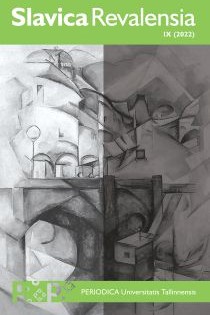Abstract
This article concerns the likely source of an erotic image from Valery Bryusov’s hoax poem collection Stikhi Nelli (Nelli’s Poems). It shows that the image of an octopus copulating with a woman in the culmination of the poem “Nochnoi ropot” (“Night Murmur”), is related to Japanese erotic engravings (shunga), and originates from Hokusai’s woodblock print “The Dream of the Fisherman’s Wife” (1814). Thus, the source established supports the idea that shunga inspired European modernist poetry in its search for a new erotic language.

This work is licensed under a Creative Commons Attribution-ShareAlike 4.0 International License.
Copyright (c) 2022 Slavica Revalensia
